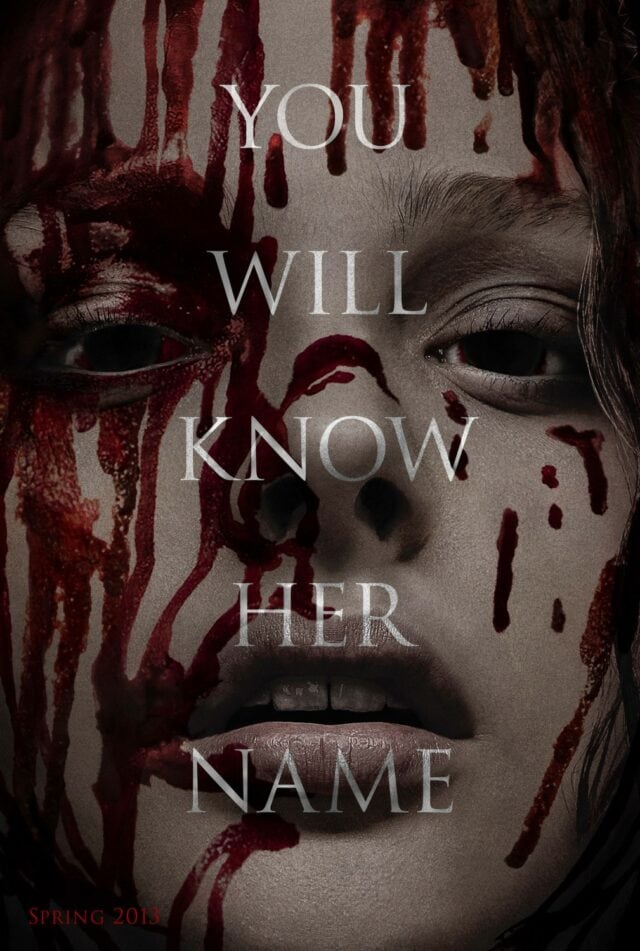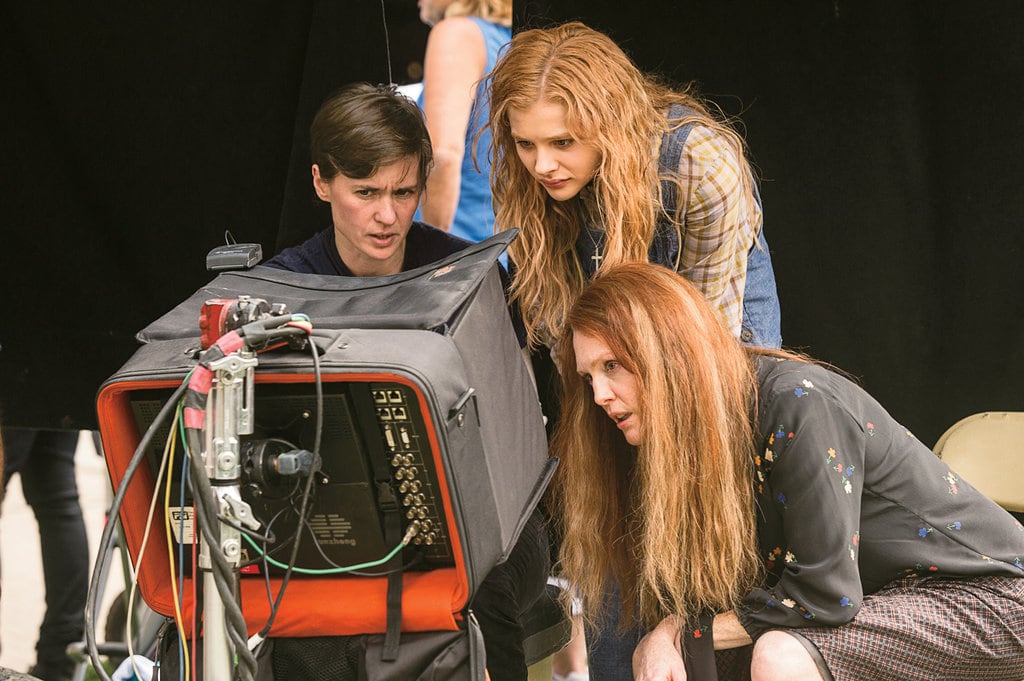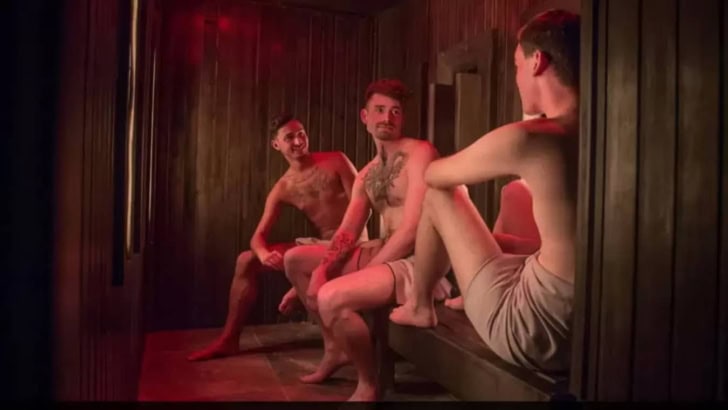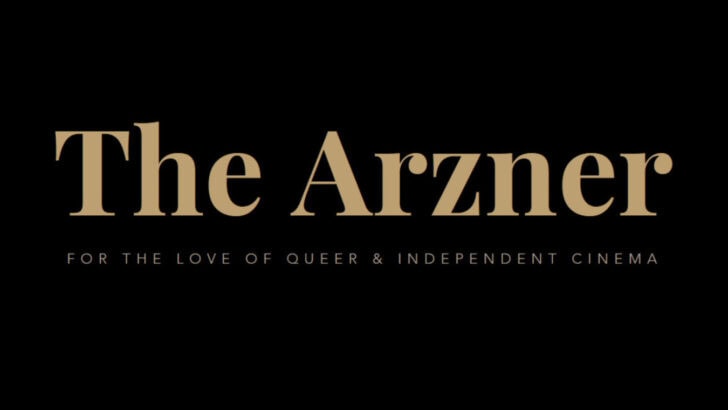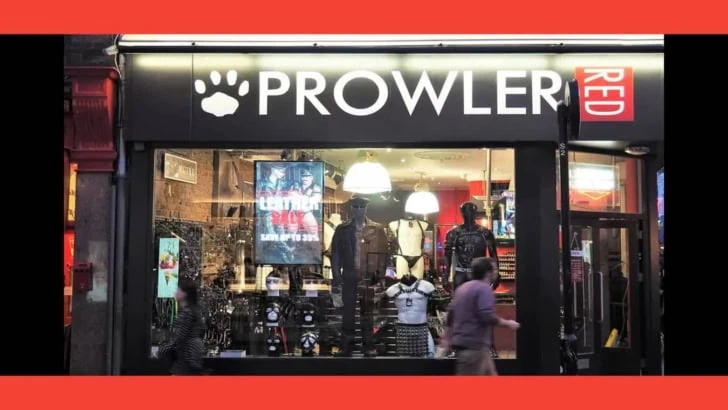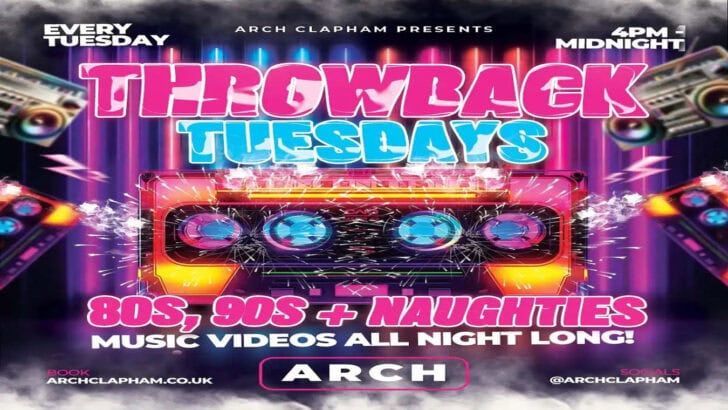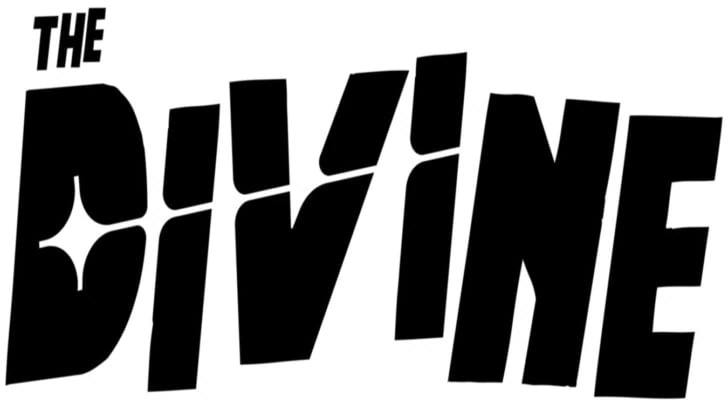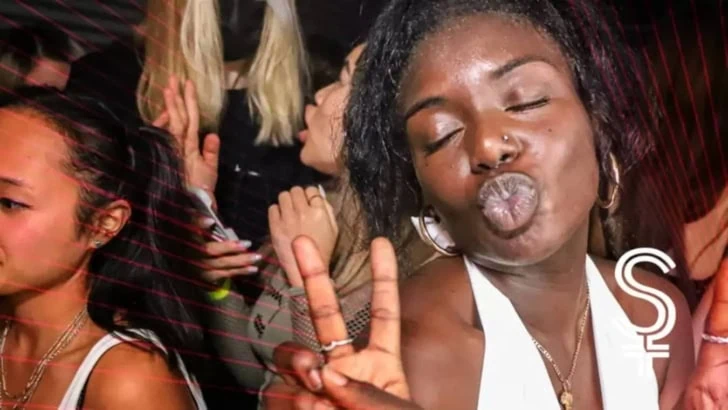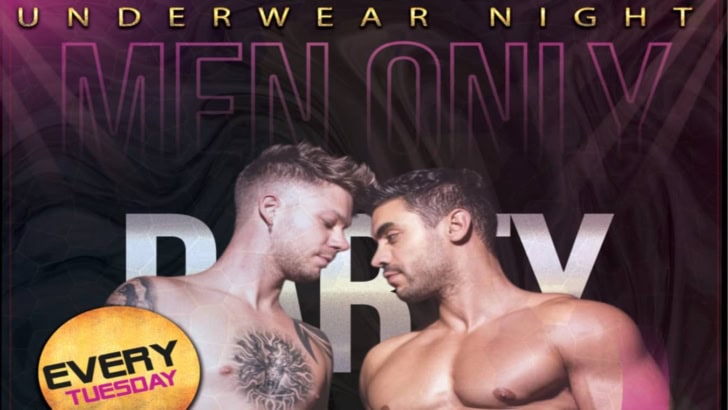Why we’re celebrating queer storytellers by Token Homo, co-host of London-based film club, Queer Horror Nights.
In the introduction to her brilliant book Women Make Horror, editor Alison Peirse explores the value in thinking about who is telling cinema’s scary stories. Not only is it a political act, it underscores how stories can be told from different perspectives, that there is no single, universal (male) voice.
In our first year-long series of Queer Horror Nights, the films are all Q-RATED!, horror movies made by out LGBTQ+ directors. We think that matters and we want to go on a journey with our audiences to understand why. We started last month with James Whale’s 1931 film, FRANKENSTEIN. A nearly sold-out screening set the foundations for the kind of film club we’d always dreamed of: an open, inclusive space where we can go on a wild ride in the darkness and then talk about it over drinks.
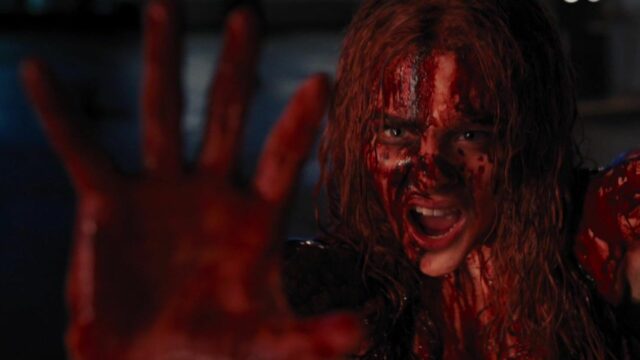
For our next film, we leapfrog a near-century of screen history to show Kimberly Peirce’s 2013 vision of Stephen King’s debut novella, Carrie. Born in 1967 in Harrisburg, Pennsylvania, Peirce is an out, married, genderqueer dyke who used to define as a butch lesbian (https://www.indiewire.com/2019/12/kimberly-peirce-interview-boys-dont-cry-transgender-1202196536/). The director rose to fame in 1999 following the release of her acclaimed debut, BOYS DON’T CRY, a groundbreaking drama about the real life, rape and murder of a 21 year-old trans man, Brandon Teena, in 1993.
BOYS DON’T CRY earned multiple award nominations and a Best Actress Oscar for Hilary Swank’s portrayal of Brandon. Upon the 20th anniversary of the film’s release, the American Library of Congress admitted the film to the National Film Registry on the basis of being “culturally, historically, or aesthetically significant”. In the very same year, Peirce was interrupted whilst delivering a Q&A about the film at Reed College in Oregon, student protestors loudly alleging transphobia and rejecting the casting of a cisgendered woman as a trans man.
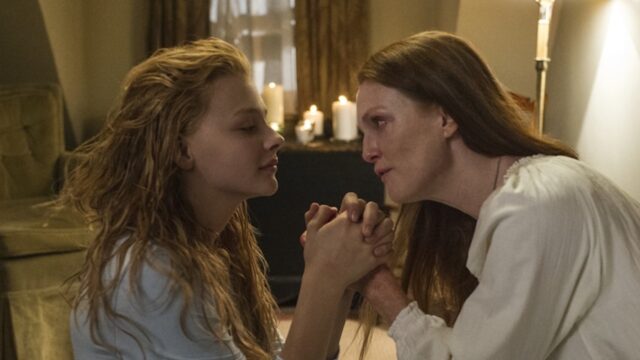
BOYS DON’T CRY deserves to be understood in terms of how the world then treated trans lives on screen (miserably!) and the efforts Peirce took to make the story from a genderqueer perspective (which were considerable). But undoubtably, times have changed since Peirce broke ground with her portrayal of a young trans male she thoroughly identified with as a masculine woman. As actor JJ Hawkins explains it (quoted in The New York Times): “Of course it’s a step in the right direction – one single story about us – but also, [Hilary Swank] played a boy and she won best actress…. That was the first time I realised that people who see me, see me as a girl dressed up as a boy.” (https://www.nytimes.com/2019/10/09/movies/boys-dont-cry-anniversary.html)
It’s interesting how these tables keep turning. Back in the early silent days of cinema, there were many more women in the senior roles of film production, writing, producing and directing their own work. This was when cinema was a popular, mass participatory art form, with films showing on every street corner to busy, working class audiences. An industry-engineered move from genre (ie. popular) to ‘prestige’ pictures, higher ticket prices and more luxurious movie theatres placed production increasingly – almost exclusively – in the hands of men. And so it has largely remained.
Kimberly Peirce’s CARRIE is very different to the version that many people will know. Brian De Palma’s 1976 CARRIE is a split-screen horror classic, placed 15th in Time Out’s list of the 100 best horror films (https://www.timeout.com/film/best-horror-films). But, for all its kinetic sense of cool, the film can feel problematic. Its ‘menstruating teenage girl to catatonic hell beast’ character arc is condemned by author Shelley Stamp as “a masculine fantasy in which the feminine is constructed as horrific” and critic Matt Zoller Seitz sees it as “a teenage girl’s nightmare as seen through the eyes of a straight male voyeur” (https://www.rogerebert.com/reviews/carrie-2013). We’d certainly argue it was ripe for a remake…
“Don’t hurt me Carrie.” // “Why not, I’ve been hurt my whole life.”
Peirce does several radical things with King’s source material. Firstly, a self-penned prologue clearly roots the horror in the trauma women suffer at the hands of men and then shows how this gets passed down the generations, amplified by both nature and nurture. Having made us witness to Carrie’s birth, Peirce then pays considerable attention to understanding their mother-daughter relationship, a facet of this Cinderella story she regards as fundamental to its impact. In Peirce’s re-telling, these women have a deep love for each other, but that bond has been corrupted. Carrie is afraid to go in the house. Margaret is afraid for them both when they leave it.

Relegating Carrie’s period to the release rather than the root cause of her telekinesis, Peirce shows how Carrie learns about her powers and acquires strength through them. Casting an almost age-appropriate Chloë Grace Moretz (actually 15 at the time of filming) really helps here, resulting in scenes that will feel familiar to all of us who spent ‘alone time’ experimenting with our own queer identities in our bedrooms as teenagers. When Carrie goes to the library to do some research, she learns that she is not a freak (a word given viral power in the film). Empowered by knowledge that she isn’t alone, a strengthened Carrie then ‘comes out’ to her fearful mom.
These powerful ideas of connection and community, told from an outsider’s perspective, run through Kimberly Peirce’s films, from the shared shame at the heart of BOYS DON’T CRY, to the consequences of war in STOP-LOSS (2008), Peirce’s drama about deeply traumatised young male soldiers returning from America’s wars in Iraq and Afghanistan. As Richard Brody writes in The New Yorker: “Peirce creates a closed-in world of characters whose tendrils intertwine in emotionally complex ways; she’s a filmmaker of community and family – of bonds, their pathologies, and their violent breaking.” (https://www.newyorker.com/culture/richard-brody/kimberly-peirces-carrie/amp )
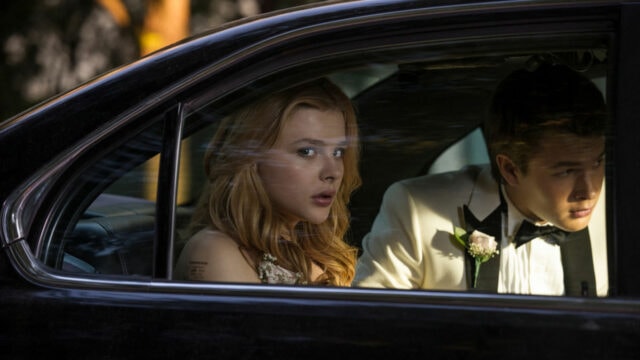
Despite making a garlanded debut, Peirce encountered a bumpier ride getting to make her second feature. Sadly, STOP-LOSS could not capitalise on its stellar cast (Ryan Phillippe, Joseph Gordon-Levitt, Channing Tatum and Abbie Cornish) and delivered disappointing box office. CARRIE was already a green-lit studio project when Peirce pitched to direct it. The finished film, and her last feature to date, is both testimony to her creative power and a work of studio-imposed compromise.
Working from a screenplay co-written by Lawrence D. Cohen – who also wrote the De Palma version – Peirce had wanted to make a horny, R-rated horror film, full of the teenage sex and violence that she feels the story merits and horror movie audiences expect. But these scenes were cut back by the studio. Whilst we’re pleased to say there’s still plenty of full-blooded horror in the final film, particularly its extraordinarily apocalyptic climax, it’s fascinating how Peirce signs off her presentation of the theatrical cut in its Blu-ray commentary track:
“I hope you liked it and I’ll be seeing you around. Thanks. Kimberly Peirce. The director.” (CARRIE, 2013, MGM Blu-Ray).
By stressing that final ‘the’, Peirce seems to be both asserting her hard-fought career status and simultaneously flipping the studios a (butch) middle finger. Indeed, maybe that’s whats’s about to erupt from Carrie’s shattering tombstone in the film’s ambiguous, and yes, studio-censored coda?
We are proud to present Kimberly Peirce’s CARRIE as a twisted, feminist, superhero origin story where a young, non-conforming woman finds a way to step into her own power. Keeping us grounded, we’ll be using the event to raise money for our friends at Wish, a women’s mental health charity based in Tower Hamlets. Their Community Link project supports women with multiple complex needs who may have been detained in prison or secure hospital and are now resettling in the community. Helping women regain control of their own stories really does make a difference.
Token Homo @tokenhomo on IG & TW / tokenhomo.com
Token Homo & Last Frame Club continue their Queer Horror Nights with Kimberly Peirce’s CARRIE at The Castle Cinema on Sunday 10 April at 14:00. First floor, 64-66 Brooksby’s Walk, Hackney, London E9 6DA.
Booking now: https://thecastlecinema.com/programme/66738/queer-horror-nights-presents-carrie/
Find out more about Wish at womenatwish.org.uk
